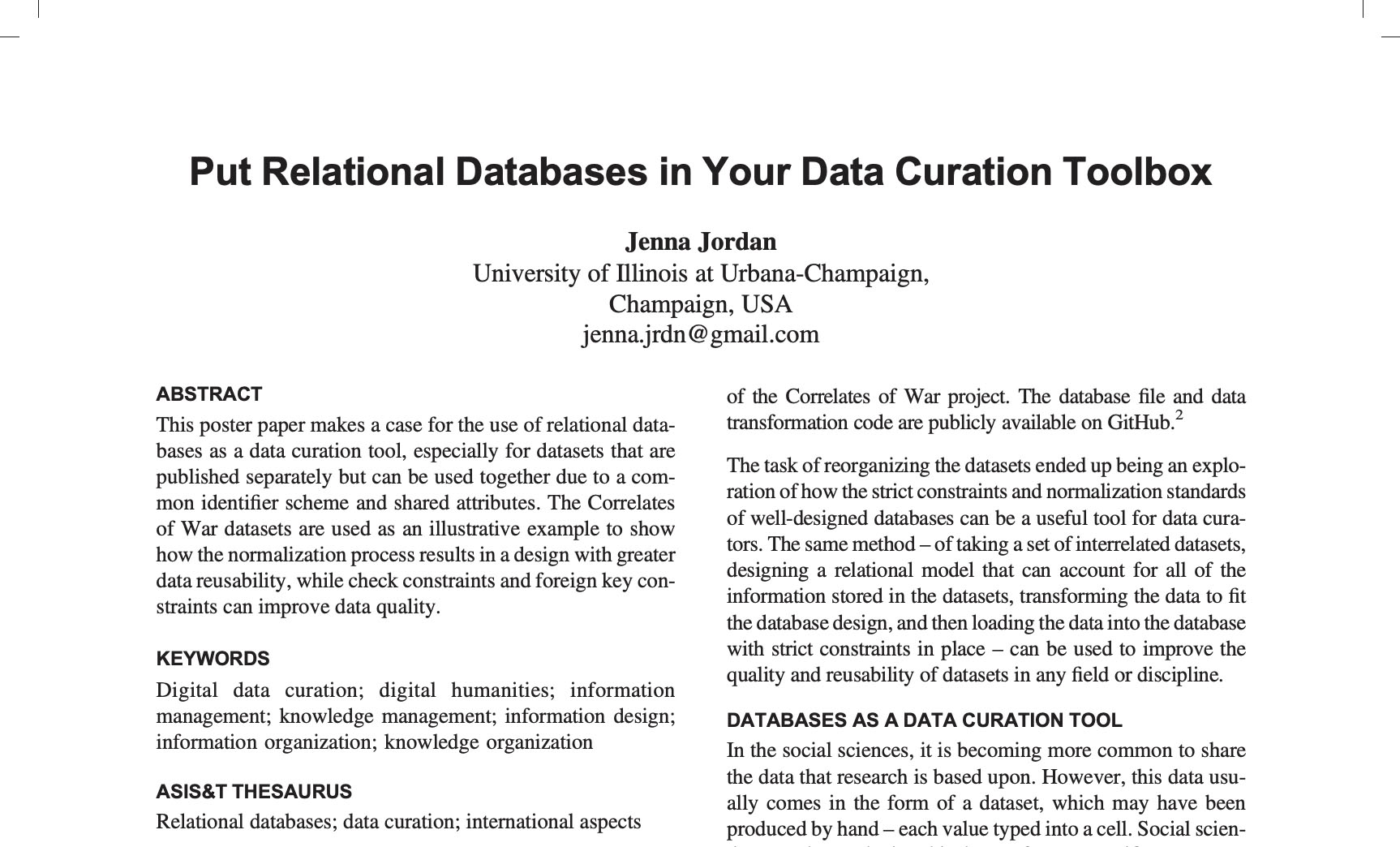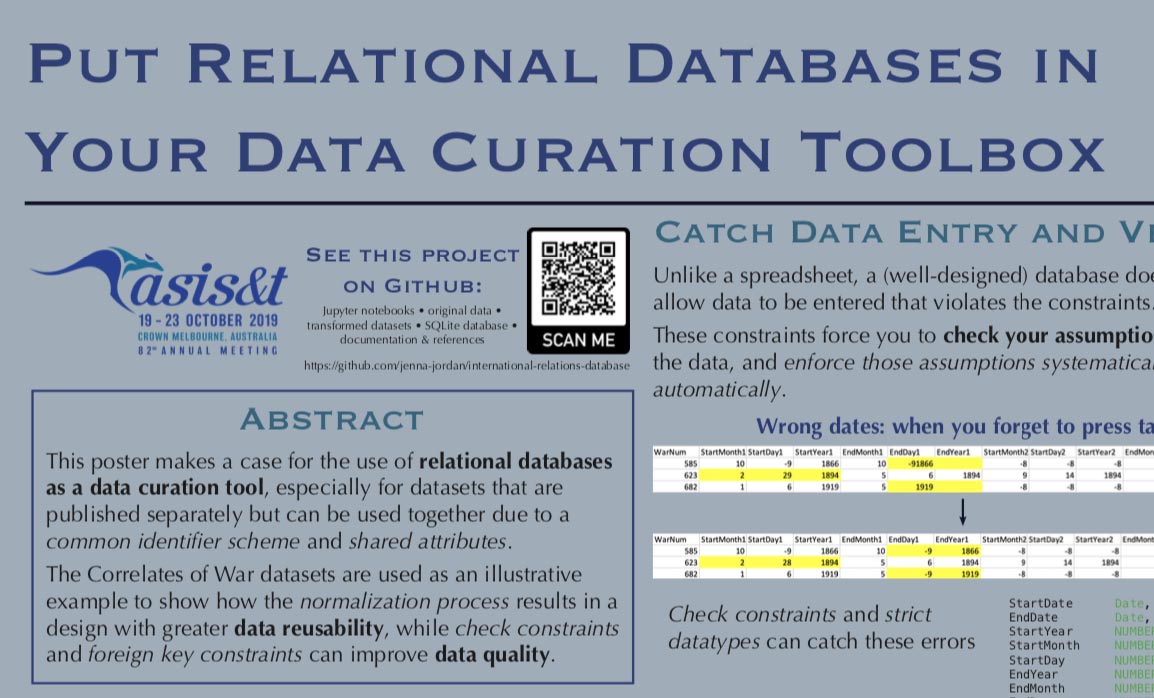Put Relational Databases in Your Data Curation Toolbox
Poster presented at the ASIS&T 2019 conference on how relational databases can be useful during the data curation process.
While I started the IRDB project with the goal of improving access to the Correlates of War datasets (as well as gaining practical experience in organizing data into a relational database and wrangling data in python via pandas), along the way I discovered just how much the data transformation process was also improving data quality. Relational databases are amazing for many reasons - one of which is that they can be really strict. A well-designed database will minimize invalid entries - something that is always a risk for human-generated data. I have to give credit for a lot of my enthusiasm towards relational databases to my IS490DB professor, Dr. Catherine Blake.
Prof. Blake encouraged me to submit a paper to the ASIS&T conference - the primary conference and organization for information science professionals and academics (coincidentally, she is also this year’s conference co-chair). During the Spring 2019 semester I worked on finishing up Phase 1 of the project and drafting a proposal for what exactly my ASIS&T submission would cover. I presented a poster on the project at the iSchool’s Master’s Student Showcase, and received great comments and feedback from fellow students and faculty members that I could use for my ASIS&T poster paper submission. Over the summer, I worked on actually writing the 2-page poster paper. I titled it: “Put Relational Databases in Your Data Curation Toolbox”. I took the approach of arguing the general advantages of using relational databases for the data curation process, with the Correlates of War datasets as the source of my examples.
In July, ASIS&T notified me that my poster paper submission had been accepted. I received feedback from three reviewers, modified my paper accordingly, and submitted the final version. I presented my poster on October 21, 2019, at the poster session for the 82nd Annual Meeting of the Association for Information Science & Technology, in Melbourne, Australia. If you would like to read the paper or see the poster, they are available here:

